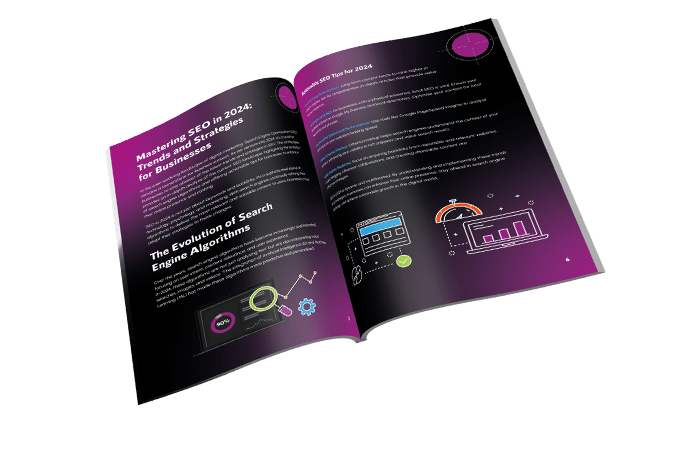News
How to Adapt Graphic Design Skills for Website Layouts and Wireframes
Introduction
Graphic design and web design share many principles, but transitioning from traditional graphic design to website layouts and wireframes requires an understanding of web-specific considerations such as user experience (UX), interactivity, and responsive design. In an era where websites serve as the digital face of businesses, designers who adapt their skills for web layouts can create more intuitive, visually appealing, and user-friendly interfaces.
In the UK, the web design industry continues to grow rapidly, with businesses investing more in digital experiences. Reports indicate that 74% of UK consumers judge a company’s credibility based on its website design (UK Web Hosting Review). This highlights the importance of well-designed website layouts and wireframes in enhancing brand perception and user engagement.
Understanding the Role of Wireframes in Web Design
Wireframes serve as the blueprint for a website, outlining the structure, functionality, and user flow before the visual elements are finalised. Unlike traditional graphic design, which focuses on aesthetics, wireframing prioritises usability and content hierarchy.
Key Aspects of Wireframing:
- Establishing a clear user journey
- Defining content placement and hierarchy
- Creating a responsive design framework
- Ensuring accessibility and usability
Adapting Graphic Design Skills for Website Layouts
1. Prioritising UX and UI Principles
While graphic designers focus on visual storytelling, web designers must integrate user experience (UX) and user interface (UI) principles. Good UX design ensures that websites are intuitive, accessible, and aligned with user needs.
How to Adapt:
- Study user behaviour and website heatmaps
- Use UX research to inform layout decisions
- Maintain consistency in typography, colour schemes, and branding
2. Creating Responsive and Scalable Designs
Unlike print media, websites must be responsive across multiple screen sizes. Responsive design ensures that content adjusts seamlessly on desktops, tablets, and mobile devices.
How to Adapt:
- Design with a mobile-first approach
- Use flexible grids and scalable vector graphics (SVGs)
- Test layouts on different screen sizes
3. Optimising Typography for Readability
Typography plays a crucial role in website usability. While graphic designers often experiment with artistic fonts, web designers must prioritise legibility, contrast, and hierarchy.
Best Practices:
- Use web-safe fonts (Google Fonts, system fonts)
- Set proper line height and spacing for readability
- Limit font variations to maintain consistency
Wireframing Techniques for Graphic Designers
Wireframing is an essential step in web design that helps designers structure content and functionality before applying detailed aesthetics. Tools like Adobe XD, Figma, and Sketch make the transition easier for graphic designers.
1. Low-Fidelity vs. High-Fidelity Wireframes
- Low-fidelity wireframes focus on structure and user flow, using simple shapes and placeholders.
- High-fidelity wireframes include detailed elements like buttons, navigation bars, and typography.
2. Using Grids and Alignment
Grids provide structure and consistency in web design, helping designers organise content effectively. The 12-column grid system is widely used for responsive layouts.
Tips for Implementation:
- Align elements to a grid for consistency
- Maintain proper spacing between sections
- Use visual weight to guide user attention
Transitioning from Graphic Design Software to Web Design Tools
Graphic designers familiar with Adobe Photoshop and Illustrator can transition to web-specific tools like Figma, Sketch, and Adobe XD to create interactive wireframes and prototypes.
Comparison of Design Tools:
- Figma: Cloud-based, real-time collaboration, ideal for UI/UX design
- Sketch: Mac-exclusive, vector-based, popular among web designers
- Adobe XD: Integration with Adobe Creative Cloud, supports prototyping
The Importance of Accessibility in Web Design
Inclusive design ensures that websites are accessible to all users, including those with disabilities. In the UK, accessibility standards are governed by the Web Content Accessibility Guidelines (WCAG), and businesses must comply with The Equality Act 2010 (GOV.UK).
Key Accessibility Considerations:
- Ensure sufficient colour contrast
- Use descriptive alt text for images
- Implement keyboard navigation support
The Future of Website Layouts and Wireframes
As web design trends evolve, interactive elements such as motion UI, AI-driven layouts, and voice interfaces are shaping the future of web design. Graphic designers who embrace these changes will have a competitive edge in the digital landscape.
In the UK, businesses are increasingly investing in web design to enhance digital experiences. Reports suggest that businesses with well-designed websites experience a 32% increase in customer engagement (Statista).
Conclusion
Adapting graphic design skills for website layouts and wireframes requires a shift in approach, from focusing solely on aesthetics to prioritising usability, responsiveness, and accessibility. By understanding UX/UI principles, mastering wireframing techniques, and using modern design tools, graphic designers can successfully transition into web design and create visually appealing, user-friendly websites that drive engagement and conversions.





The Ultimate Social Media Guide
With the ever-growing power of social media, we use the latest techniques, video, and animation software to craft eye-catching social media assets that make your brand pop. Our designers, wielding Adobe Creative tools, create distinctive animations and graphics to illuminate your brand story and highlight your products or services. Want a unique design? No problem – we also offer bespoke designs to match your brand aesthetic.